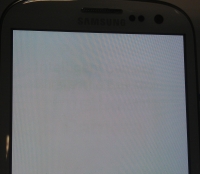Hello. I am writing a topic out of curiosity, or maybe someone from the Users has met the phenomenon called "burnout" of the screen type Amoled, Super Amoled? Often somewhere on YouTube you hear yourself not to use high screen brightness, set a dark type of interface or a dark keyboard theme. Honestly, I had a Samsung Galaxy S3 Mini, S3, S4, S5, S5 Neo, Note 4, S6 Edge, S7 Edge and now Note8, and I have never seen visually what this phenomenon would rely on. I will say more, recently I needed a phone to work, I bought a used Galaxy S3 which screen was in perfect, sharp state, without any discoloration, copy, shadow and similar phenomena and yet the phone is x on the back of the neck, and thousands of hours worked on the illuminated screen. The same applies to the Galaxy S4 which I have in my family from novelties, S5 which is also about 3 years old, Note 4 and S6 Edge (about two years old). Has any of you really encountered the "burnt" amoled screen? I have extended the contract on Note8, the smartphone will cost me a little so I would like to know what is the real risk of this type of phenomenon, because from what I know the warranty does not include this (ie if burns occur during the warranty period, then repair / exchange lcd I will be able to make on the site only for a fee).
Half of smartphones that I exchanged since the news was mine, only the relatives of the family took over, and during my use I often worked, for example, two navigations 6-8h a day (google maps and yanosik) and completely no discolorations, breakthroughs, etc. what is the real risk of this phenomenon, because as you already know S8 / S8 + / Note8 had quite strong problems with pink whites so maybe they are more susceptible to so-called burnout?
Thank you in advance for all your opinions
Half of smartphones that I exchanged since the news was mine, only the relatives of the family took over, and during my use I often worked, for example, two navigations 6-8h a day (google maps and yanosik) and completely no discolorations, breakthroughs, etc. what is the real risk of this phenomenon, because as you already know S8 / S8 + / Note8 had quite strong problems with pink whites so maybe they are more susceptible to so-called burnout?
Thank you in advance for all your opinions



